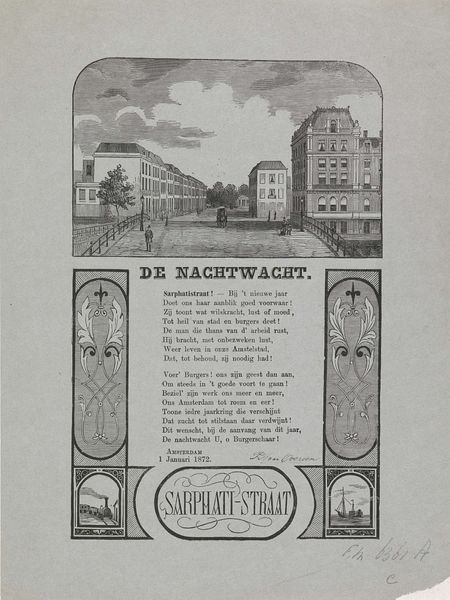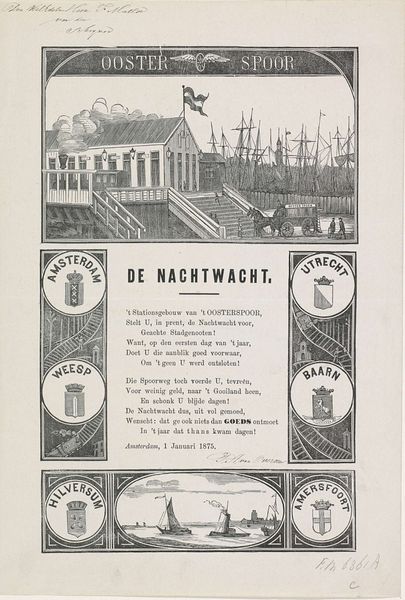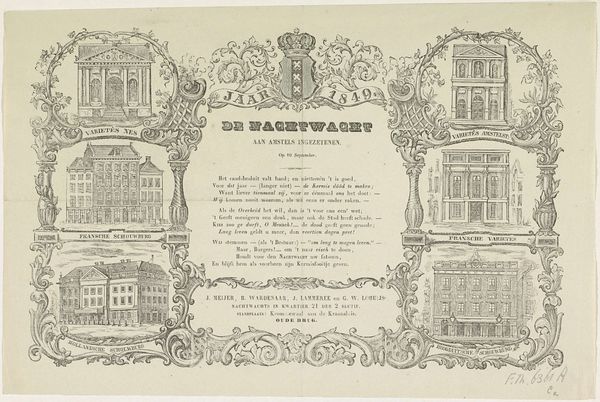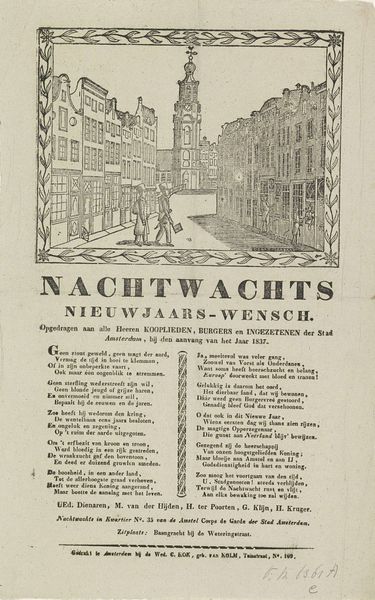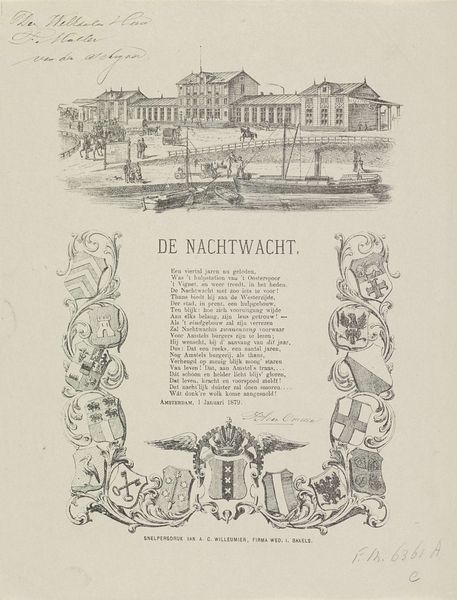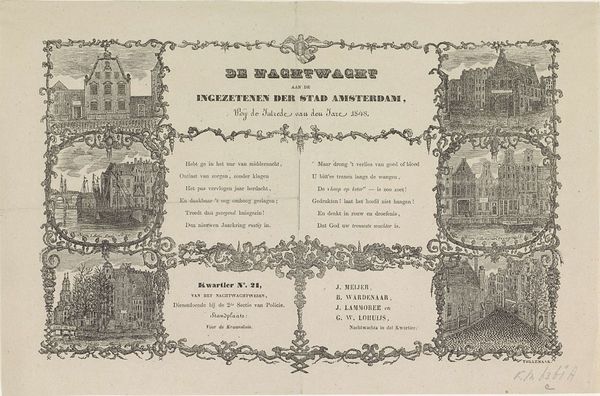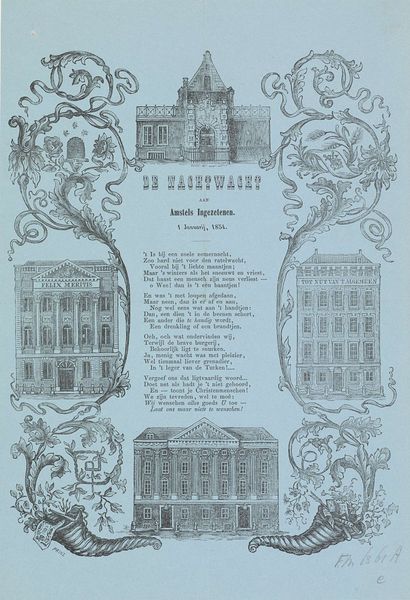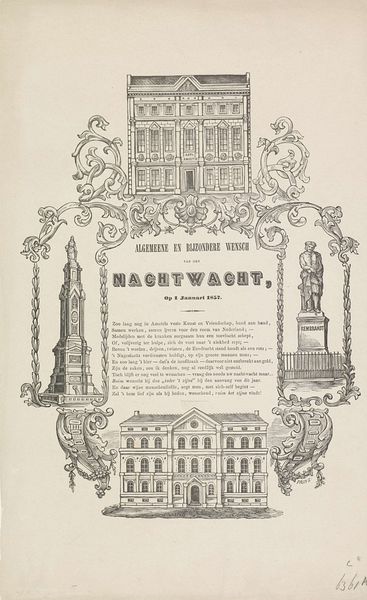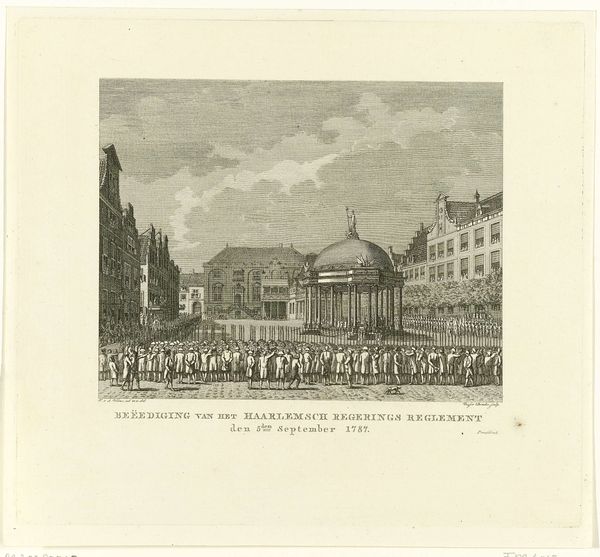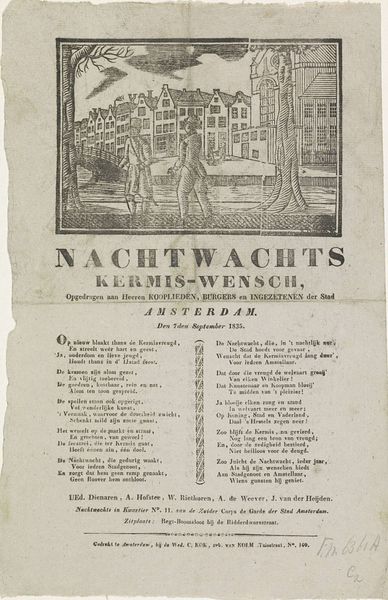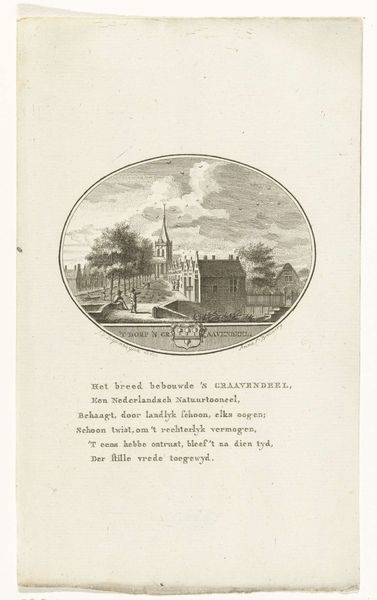
drawing, graphic-art, print, pen, engraving
#
drawing
#
graphic-art
#
dutch-golden-age
# print
#
pen work
#
pen
#
cityscape
#
street
#
engraving
Dimensions: height 300 mm, width 217 mm
Copyright: Rijks Museum: Open Domain
Curator: Here we have the "Nieuwjaarswens van de Amsterdamse nachtwacht voor het jaar 1880," a New Year's greeting made using pen and engraving techniques. The work probably dates to around 1879-1880, give or take a year. What are your initial thoughts? Editor: The combination of a city view above with decorative embellishments surrounding text below feels rather formulaic at first glance, a design made from already made elements. It presents an interesting tension between a seemingly documentary scene and celebratory ornamentation. Curator: Precisely! It's important to view this piece in its socio-historical frame. Amsterdam in 1880 was undergoing rapid industrialization and urbanization. The night watch held significant social roles within the community. Therefore, this New Year's wish can be viewed as a dialogue between those that kept guard, a form of solidarity, a printed form to bridge gaps. Editor: Interesting, seeing it as dialogue between labour positions is what really makes it intriguing, rather than just a simple, singular greeting. It would also be interesting to think of how its means of production influenced accessibility – prints such as these facilitated communication on a larger scale for city officials during a time when artisanal production started changing and new forms of value exchange and relationships to materials began to exist. Curator: And we can further deconstruct that accessibility. While the print may have reached many, its symbolic weight, deeply tied to civic duty, speaks to power dynamics embedded in the urban landscape of that period. Think about the selection of cityscape versus countryside imagery, of pen work replicating the actual act of civic guarding... Editor: Good points! It brings to mind questions of skill, labour, even class that influenced art making. To think about all the material circumstances that influenced not just the look of this particular print, but all others printed like it... Curator: So, despite its initially commonplace appearance, “New Year’s Wish from the Amsterdam Night Watch for the Year 1880” invites reflection. It acts as a symbolic representation of labour hierarchies interwoven with the broader social and political conditions of 19th-century Amsterdam. Editor: Indeed. Thinking about production and means of dissemination sheds some light into a common everyday expression, reminding us that everything, even a new year's greeting is produced out of certain conditions.
Comments
No comments
Be the first to comment and join the conversation on the ultimate creative platform.
